Implementing the EEF’s ‘Five-a-day' principle to support SEND learners in the classroom
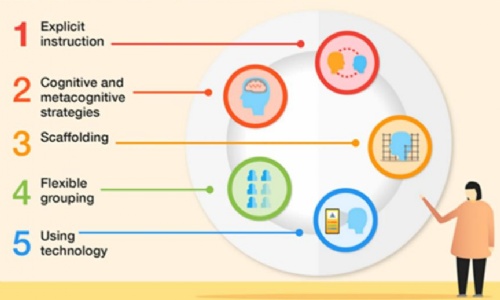
The EEF’s ‘Five-a-day' principle to support pupils with SEND, taken from their ‘Special Educational Needs in Mainstream School’s’ guidance report, is illustrated in the diagram below.
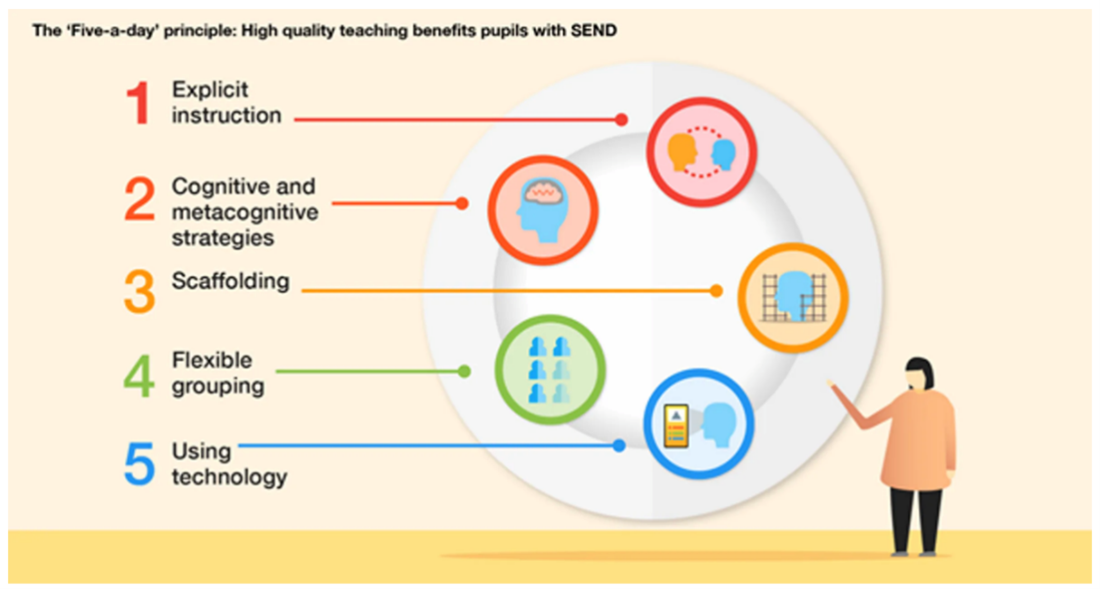
For more information about the 'Five-a-Day' approach, download the information poster, which explains the recommendations in more detail. These particular five high quality teaching approaches are well-evidenced to have a positive impact on all learners including those with SEND.
Gary Aubin, EEF SEND Specialist, states that the 5-a-day strategies are part of most teachers' daily practice. Carefully considering the implementation of such practice and making small intentional tweaks can have a significant impact on children’s learning. As cited by Doug Lemov, ‘little changes can make a big difference’. For instance, following the guidance report, both teachers and LSAs in my school have been working on implementing ‘wait time’, and just this small adjustment has had a profound impact on the children’s learning, both raising the ratio of them answering the questions, and supporting better, more rigorous answers.
Teaching children with SEND can be complex when there is a diverse range of needs in a class. Looking through the lens of a SEND pupil, for the guidance to be used effectively, it cannot merely be seen as a checklist to tick off. As Alexander 2010 (Cambridge Review) states, ‘Teachers should work towards a pedagogy of repertoire rather than recipe and of principle rather than prescription’. To utilise the guidance findings effectively, teachers need to build up a repertoire of these strategies to support SEND pupils in day-to-day lessons. It is essential to carefully consider what works for each individual in the class. To facilitate this, teachers need to know their SEND pupils well and identify what does and doesn’t work for them, their barriers to learning and next steps (which can be ascertained from Child-Centred One Planning). Acting upon pupil voice is crucial to improve learning outcomes for SEND children. Some often say they don’t like being seen as ‘different’ therefore mixed ability grouping may work well for them while others find it difficult to work with others and may prefer to do their independent tasks on their own, sat away from distractions. When teachers are flexible in their response to the individual needs of their SEND children and are prepared to make reasonable adjustments, they allow them to learn successfully in a way that works best for them.
Nikki Kaiser, director of Norwich Research School says, ‘What’s the point of helping pupils do something really well if they can’t do it when I’m not there?’ With this in mind, it is important to have high expectations and plan teaching sequences where pupils can all achieve independence in their learning. A litmus test to see if this is happening in class is to look through the SEND pupils’ books and see if they have lessons where they have completed the learning independently and have met the learning objective. If they require a lot of additional adult support, is progression seen in the sequence of learning, moving through the scaffolding pyramid from modelled, to prompted through to being able to do the task independently?
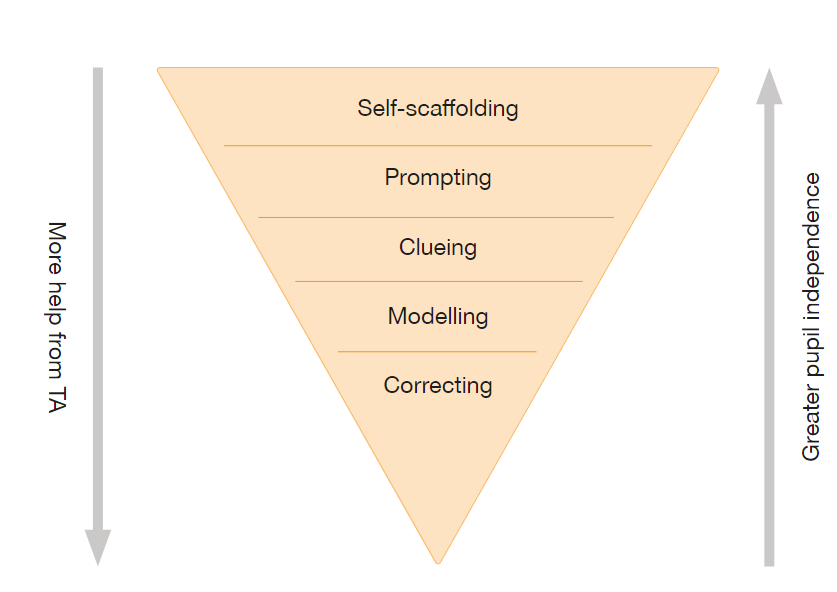
Careful assessment that shows exactly what the SEND pupils’ starting points are is key in making sure the balance between challenge and support is right for these learners to ensure they get to the point of being able to learn independently.
Dylan William has called ‘Cognitive Load Theory’ the single most important thing for teachers to know. When planning for SEND pupils, consider what pre-teaching will benefit pupils in order for them to be able to access the lesson without feeling overwhelmed. Examples of pre-teaching in my school could be learning to read the lesson’s text extract to fluency to be able to comprehend it, or to learn new key vocabulary they will need to use within the lesson. Being exposed to some of the key content prior to the lesson can not only help to reduce cognitive overload abut also help to instill confidence in SEND learners as a result this can also help to reduce any anxiety by giving them a heads-up on what they will be learning.
When preparing for explicit instruction, consider if you need to model everything or just the key new part of the learning the children do not know which will require a clear explanation. Using simple concise language when we model our thinking can really help guide a SEND learner to know how to approach the new learning, breaking it down into manageable steps. Rosenshine’s ‘Principle of Instruction’ model illustrates the fading effect of teacher support and the shift to pupil accomplishment with their learning within seven steps as demonstrated in the diagram. 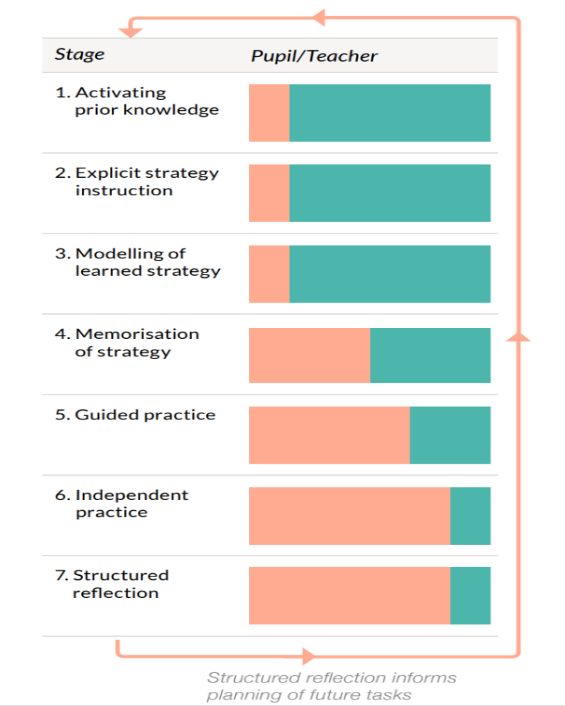
At my school, before children set off on their independent practice we aim for teacher/pupil's roles to be reversed so that the pupil can give an explanation to the adult about what they have to do. This is done in various ways depending on the individual learner. During guided practice, many of our SEND learners benefit from working in mixed ability pairs using structures such as Kagan’s Rally Coach to give peer support to help memorise the learning strategy. Some of our learners, who are aspiring YouTubers, like to explain their learning by creating their own YouTube videos (as shown in the example in the link). This fills them with motivation and brings out their enthusiasm to explain something they might ordinarily find challenging. Others like to use audio-visual boards to explain the process so they can use it as a scaffold throughout the lesson, such as this ‘Chatta’ board a child made to explain how to add near doubles. Some age-related-expectation learners in writing, who have difficulties with maths, like to make their own maths diaries, complete with a contents page and dedicated pages with their own worked examples of methods they have learnt and ‘top tips’ in their own words to apply methods effectively. The diaries can be taken home to support homework and also work as great revision guides to help activate prior knowledge when revisiting or building upon their learning. When pupils lack self-belief in their learning and they are unsure of what to do, looking back at the models they have created and explained helps to remind them they have and can do it, which is a good motivating factor.
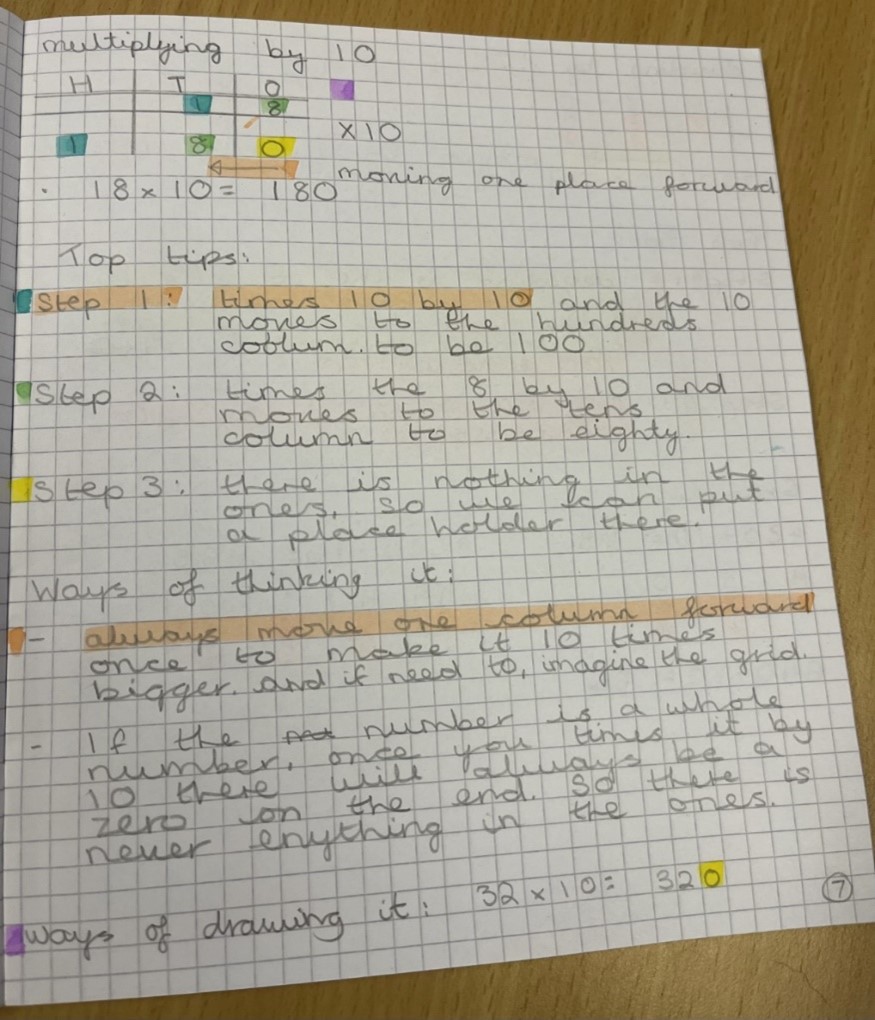
Example of a page from a child’s maths diary
With SEND pupils who have cognition difficulties, it is important to consider the key fundamentals that they need to know and allow them the time to overlearn a method and revisit it regularly. Sometimes we can be too quick to try to take the concrete scaffolds away. Getting children to reflect on their learning and allowing them to monitor if they are ready to reduce the scaffolding is a helpful way to know if they are ready to move on to the pictorial or abstract phase.
The EEF Five-a-day principle is a useful way for all teachers to consider how to support children in day-to-day practice but is used best when approaches have been selected to meet individual needs. Just like when trying to encourage people to eat 5 portions of fruit and vegetables it helps to give them a choice of which ones to eat, when using the Five-a-day principle it is useful to give the child a choice in which strategies are used and how.
If you would like to consider your own practice in terms of the Five-a-day you may want to look at the set of questions set out in this EEF 5-a-day reflection tool.
References
EEF Guidance Report for Special Educational Needs in Mainstream Schools
EEF Guidance Report for Metacognition and Self-Regulated Learning
Lemov, D 2021, Teach Like a Champion 3.0’, Jossey-Bass, Hoboken
Sherrington, T 2019, Rosenshine’s Principles in Action, John Catt Education Ltd, Woodbridge
Written by Gabrielle Deed, Lyons Hall Primary School
Read our other blog posts here.
